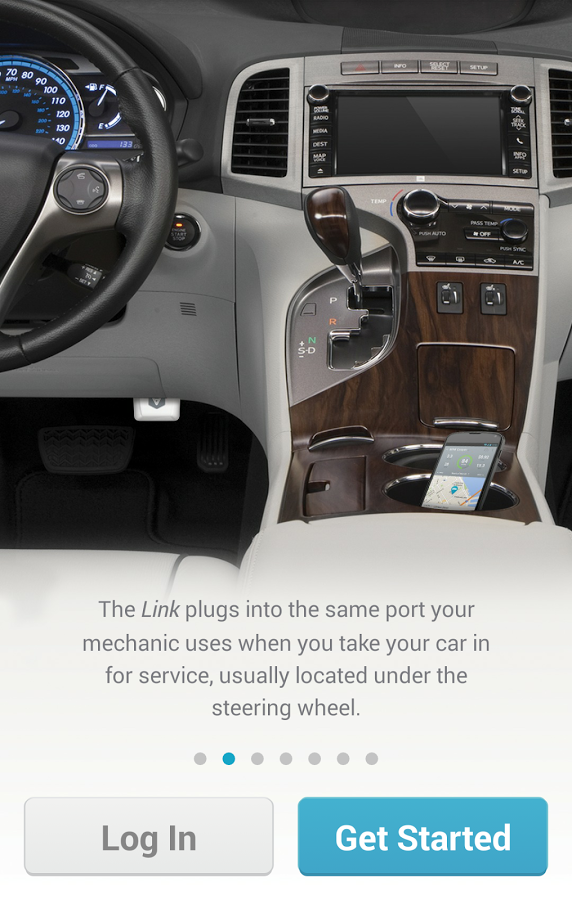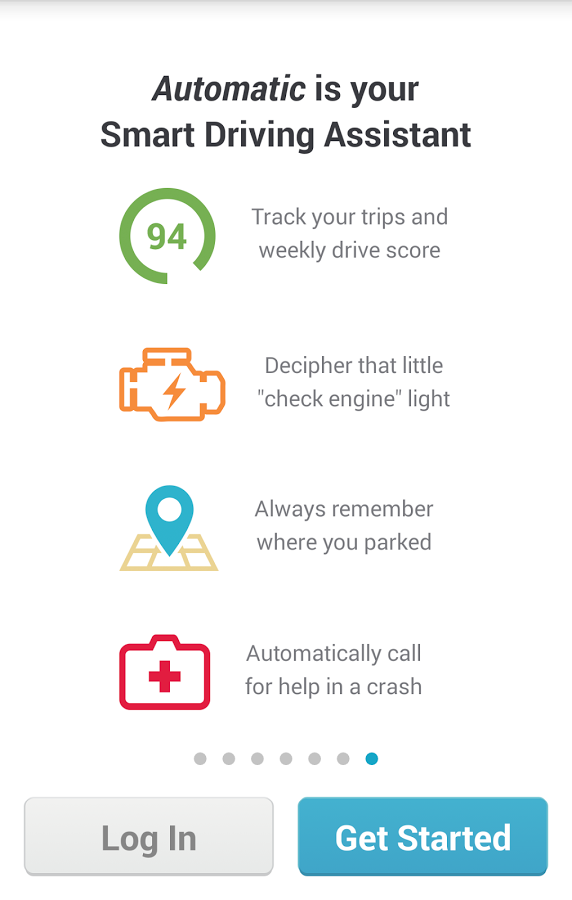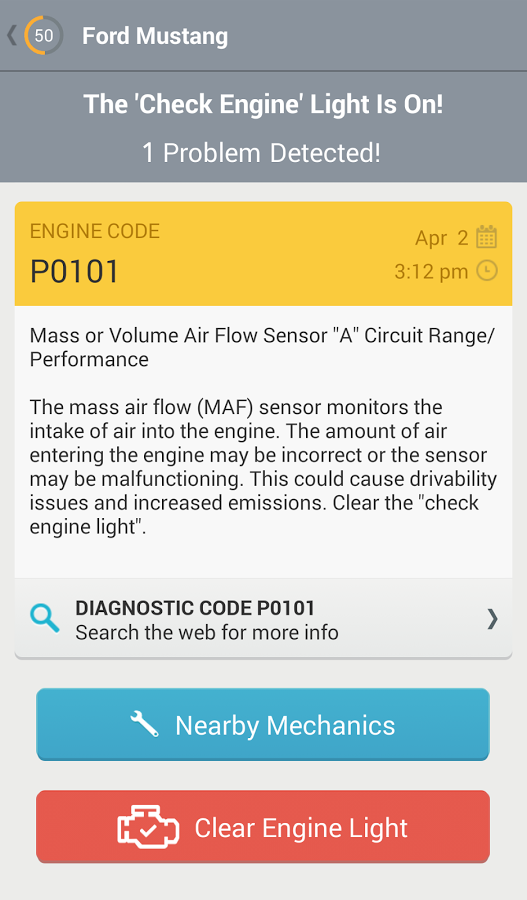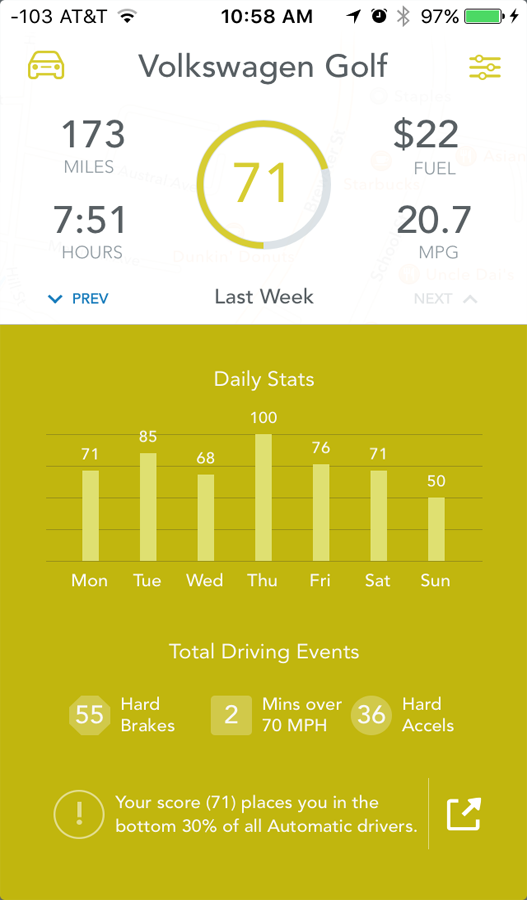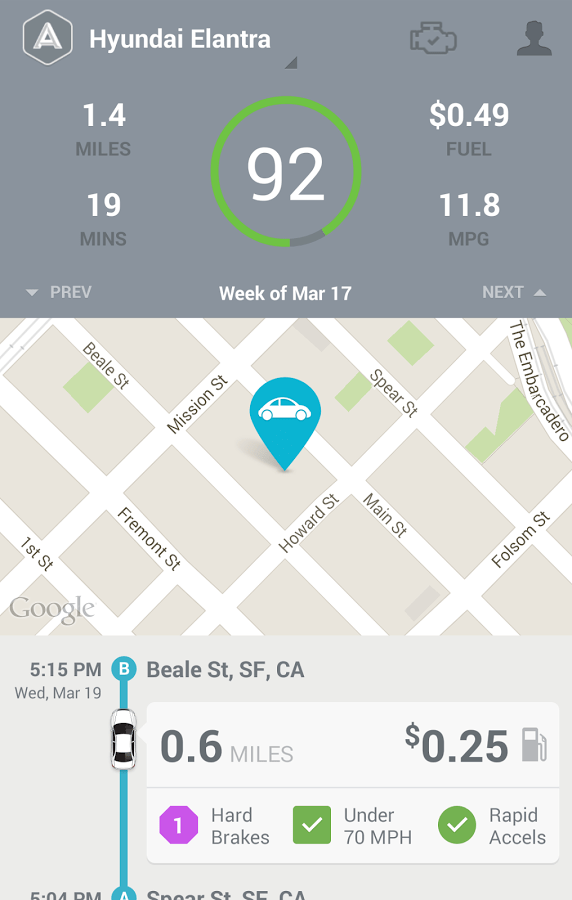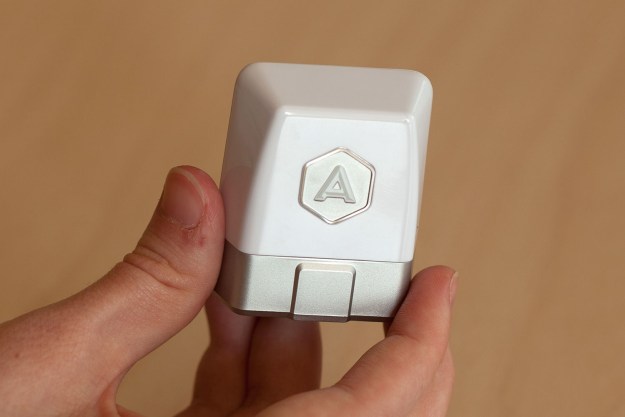
- Handy metric data to base better driving behavior on
- Simple installation and setup
- Cost-free collision alert and emergency service notification
- real-time coaching for fuel efficient driving
- Translates obscure engine diagnostic codes into English
- Location tracking could be problematic if abused
- Coaching easily disregarded
- Sets the standard, but needs to innovate to compete with competitors
Chances are that as you go about your daily life, you’ll encounter a fitness monitor strapped to someone’s wrist, keeping tabs on their steps, heart rate, and other vital indicators throughout the day. They’ve become so ubiquitous and have gone through so many iterations, we hardly pay attention to them. What’s truly fascinating about them — to me, at least — is how long we’ve been using them to pair ourselves to our smartphones before the idea came along that we can do that with our cars.
The Automatic Adapter is the smartphone accessory that made us all slap our foreheads and realize that if we can sort out and monitor our own systems via an app (Android, iOS), why can’t we do that to our daily driver? Curious to see what a fitness monitor for automobiles can offer, I decided to introduce one into my car-heavy existence.
Automatic’s manual
Automatic’s adapter is an accessory that plugs directly into the OBD II port of any car built after 1996. The OBD, or On Board Diagnostic port, is the interface mechanics use to access the computer modern cars have that tracks system data as well as overall system health. That check engine light? Something’s wrong, but that’s just a general alert, and only access to the port will give you specifics.
Sounds simple enough. The only problem is, getting that information hasn’t been particularly user friendly, requiring a trip to a mechanic, who also needs specific code-reading computers.
What Automatic promises is a device that translates these codes into plain English, telling you just what that check engine light is trying to warn you about. It’s not the first device to do this, but it is the one that has gained mainstream popularity thanks to its user-friendliness and being available outside of an AutoZone. In-between automobile maladies, the adapter is also supposed to coach you into being a more fuel-efficient driver.
Plug-and-play
For the test, the Automatic adapter was going to perform duty in a Volkswagen Golf, shared by a few people in my household of young adults. The car itself is due for service and has a tire-pressure monitor light on. I figured that Automatic would convey this to me. Installation was very simple, as the OBD port rests exposed underneath the driver’s side dashboard, above the pedals. This means there’s no wiring or unfastening involved, just plug it in and follow the step-by-step instructions prompted by the app as the device pairs to your phone via Bluetooth.
Automatic’s OBD II car adapter brings car health data to the masses, but its service as a fuel efficiency coach is too subtle to get through to heavy-footed motorists.
After a brief firmware update, the device detects what info can be gathered from the car and then registers it with the serial number of your adapter. If you’re fortunate to have a few cars in your driveway, you can set up multiple vehicles on the app and move the adapter between them when necessary. Interestingly, the App couldn’t detect — and thus alert me to — the current fuel level. A Volkswagen being tight-lipped about its efficiency. How topical.
Also despite the car itself alerting that it is due for service, the app didn’t register as anything problematic within the system, which indicates just what the threshold is for the data Automatic reveals. Low tire pressure and timely service intervals are up to you to remember, which is something Automatic’s latest rival, Vinli, helps keep track of with its Carport service.
Subscription-free crash alert
In case of the unfortunate happening, Automatic has a crash alert system that detects a collision using the device’s built-in accelerometer. After a 45 second countdown, the device will upload details such as your location to an Automatic call center where an agent will attempt to call you, dispatching emergency services if need be. They’ll also notify any emergency contacts that you authorize during the setup. Just give them a head’s up before doing so since they get an alert text which may alarm them. This isn’t something Automatic users pay extra for, so it’s a nifty little bonus you hope to never use.
Put me in the game, coach!
Efficiency coaching is by far the most active function of the Automatic. Measured by the built-in accelerometer, the adapter measures hard braking, hard launches off the line, and when your car goes over 70 mph. Do any of these things, and the automatic bleeps an audible tone while it notates your transgression. The tone itself isn’t bothersome, but after a while, even those not aiming for better fuel economy develop a Pavlovian twinge of guilt whenever the little dongle chirps.
All the lead-footing works against a weekly 0 to 100 score. The results page shows a tally of your points and notes your driving time, as well as how many miles you’ve covered. My scores were consistently within the 70s, which I figured was average, but it actually places me in the bottom 30 percent of Automatic users. That stung a bit to read, but then I wondered how many of these angelic motorists have to contend with the chaos of Long Island roads.
Careful monitoring
When not behind the wheel, Automatic can give you a full report of your behavior via the app or the Web-based dashboard. This overview displays loads of data on your driving behavior, including the places the car has been since you’ve plugged the device in. Incidentally, you may want to disclose anyone who shares the car with you that their routes are being monitored and logged. This info can also be tied into the business tagging feature, which helps keep track of travel expenses if the car is used for business.
Conclusion
Since I (thankfully) didn’t have engine problems for the Automatic to detect, I can’t speak to its ability to diagnose issues, but as a tool to become a more fuel-efficient driver, it’s about as handy as a fitness monitor is for weight loss: It’s only as effective as the person using it. The tones for hard braking and acceleration are handy for fuel saving when listened to, but if ignored (or you drive in a seemingly lawless urban area, with the odds stacked against you), they ultimately add up to little more than the same twinges of guilt that your fitness app causes when you fail to meet a movement goal. Automatic does a great job delivering the data we ultimately should have, regardless if its used or not, it’s just up to us to pay attention to it.
Highs
- Handy metric data to base better driving behavior on
- Simple installation and setup
- Cost-free collision alert and emergency service notification
- Real-time coaching for fuel efficient driving
- Translates obscure engine diagnostic codes into English
Lows
- Location tracking could be problematic if abused
- Coaching easily disregarded
- Sets the standard, but needs to innovate to compete with competitors
Available at: Automatic Amazon Best Buy




